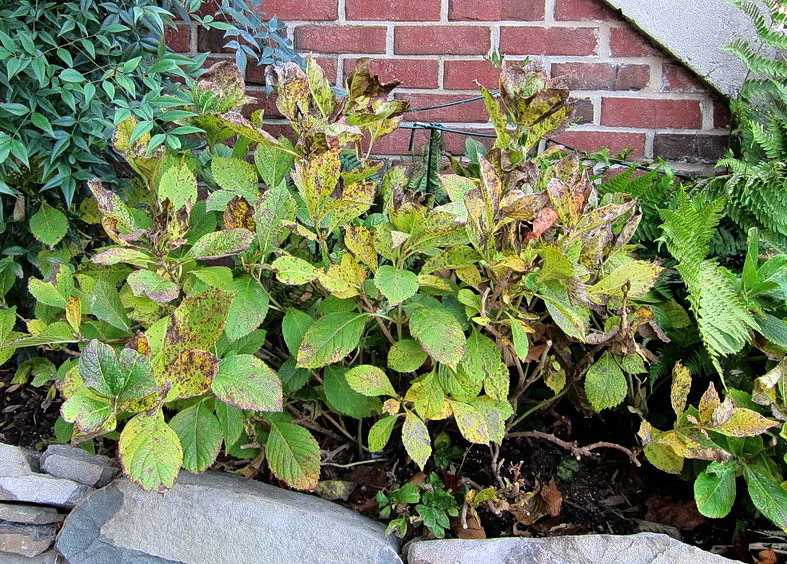Some Ideas on Hydrangea Leaves Turning Yellow You Should Know
Wiki Article
Top Guidelines Of Hydrangea Leaves Turning Yellow
Table of ContentsSome Known Details About Hydrangea Leaves Turning Yellow The smart Trick of Hydrangea Leaves Turning Yellow That Nobody is Talking AboutSee This Report on Hydrangea Leaves Turning YellowHydrangea Leaves Turning Yellow - QuestionsGetting My Hydrangea Leaves Turning Yellow To WorkExcitement About Hydrangea Leaves Turning Yellow
The container ought to be huge sufficient so the plant can grow and get all of the water and nutrients it requires. Panicles like the full sun.
Ornamental turf, Rose of Sharon, or Holly shrubs are simply a few concepts of plants you could use to block the wind. If you need to hair transplant, find a place in your yard that is well protected from sun and wind. Transplanting is ideal done in the fall or the spring.
See This Report on Hydrangea Leaves Turning Yellow
All of the above circumstances might happen to any type of garden enthusiast. Luckily for everyone, hydrangeas are really durable, and will most likely recover very rapidly with a little love and care. The plants area is the most important aspect when it involves obtaining well established and appropriate growth. With a little planning on planting place and proper maintenance, you'll have the ability to guarantee your hydrangeas! (Hydrangea Leaves Turning Yellow).So, if Hydrangea leaves turn yellow and diminishes later, it's typically due to overwatering, as the plant can not uptake water and drops the leaves to reduce off transpiration. Following this, Hydrangea leaves begin to droop and shrivel. Considering that both problems can establish yellow fallen leaves, you ought to identify the difference between the overwatered and underwatered plant.
You can save the plant from yellow fallen leaves by providing it the proper light and positioning. If your plant gets yellow leaves, move it to a dark location.
The Buzz on Hydrangea Leaves Turning Yellow
Bear in mind, Hydrangeas are just frost tolerant in autumn and winter season as they go dormant, and temperature alterations can trigger yellowing leaves and brown areas. If it obtains as well warm, the edges of the leaves become yellow, turn brownish and develop a crispy appearance. Transfer your potted Hydrangeas far from drafty north-facing windows in the winter season.Hefty dirt can conveniently block the oxygen supply to the roots and sever the connection with the top components of the plant (fallen leaves). Hydrangea leaves alter their shade if they discover small hassles in the soil composition. This issue can create the Hydrangea leaves to turn yellow, experience from leaf drops, and provide a saggy plant compatible overwatering.
Yet, yellow leaves in Hydrangeas are the first indicators of disease problem, commonly complied with by black places, browning, goes down, and wilting. Isolate the diseased or pest-infested plant from the healthy and balanced plants to avoid condition spread. If it is a garden plant, remove all the contaminated leaves using sterilized devices and tidy up all the debris.
Not known Details About Hydrangea Leaves Turning Yellow
Reducing off helps Hydrangea shade unnecessary weight and protection, allowing the growth of brand-new view publisher site fallen leaves. The finest time to trim Hydrangeas is spring when the plant is prepared to sprout foliage for the following period. Evaluate for spent or unhealthy fallen leaves and reduce the base of a stalk that joins the leaves and stem.Prevent cutting healthy and balanced or green fallen leaves, and do not get rid of even more than 25% of the plant's vegetation. The major reason behind the red leaves in Hydrangea is poor soil or environmental conditions.
Repot the plant annually in springtime or every 2 years if the growth rate is sluggish.
Fascination About Hydrangea Leaves Turning Yellow
There are six main factors why this could occur:: The plant does not obtain adequate sunlight.: The roots are either also wet or also dry.: The plant is too cold.: The soil is not acidic or alkaline sufficient for the hydrangea.: The plant isn't obtaining the ideal nutrients it requires to stay healthy.Each factor affects the plant in a means that can be fixed if we recognize exactly how to care for hydrangeas the right way. When we chat concerning inadequate light for hydrangeas, we suggest that the plant isn't getting sufficient sunlight.
Without enough sunlight, the fallen leaves can turn yellow, the plant can end up being weak, and it could create fewer blossoms. To make certain a hydrangea receives ample light, it must be put in a place where it can enjoy the morning light and be protected from the extreme afternoon sunlight. Overwatering is when a hydrangea plant gets more water than it requires.
Hydrangea Leaves Turning Yellow - Truths
Without adequate air, the origins can not do their task well, and the plant begins to experience. Yellow fallen leaves may be an indicator that the plant is obtaining as well much water. On the other hand, dehydration happens when the plant does not get enough water. Like individuals, plants require water this hyperlink to remain healthy.
It is essential to know that this kind of yellowing is various from the yellowing brought on by issues like excessive water or otherwise adequate light. If the yellow leaves are mainly at the bottom of the plant and the rest of the plant looks healthy try here and balanced, it might just mean that the leaves are just obtaining old.
Report this wiki page